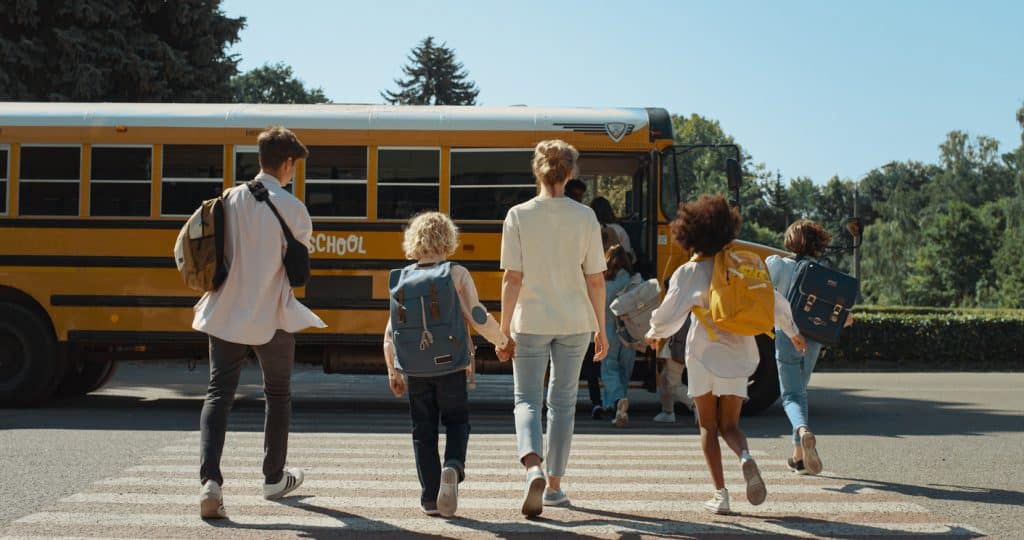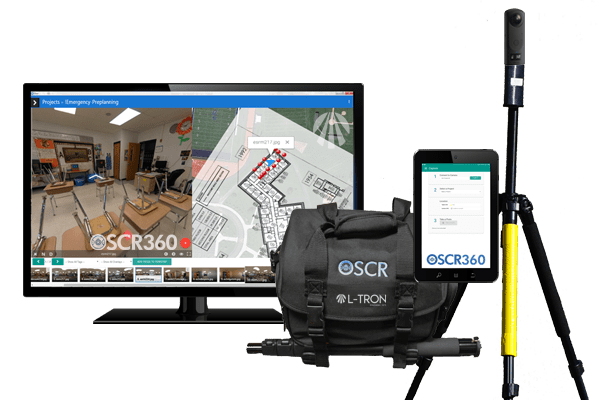Interpersonal communication has proven to be challenging for groups of people working together. Details get lost in translation. Miscommunication is common due to tone, dialect, words with multiple meanings, or simply the failure of a speaker/writer to convey an intended message.
When it comes to creating your school emergency response plan, it is essential that everyone is crystal clear about what the plans mean and how to implement the plan in any given emergency scenario.

The “I Love You Guys” Foundation’s Standard Response Protocol (SRP) promotes clarity surrounding school safety plans. The SRP provides consistent, shared language among students, staff, and first responders, as well as specific actions that accompany specific sets of language directives. The five directives of the SRP are simple, and the actions remain the same, no matter which type of emergency may occur.
These directives are: Hold, Secure, Lockdown, Evacuate and Shelter.
- Hold is the protocol used when the hallways need to be kept clear of people. The SRP language that follows is, “In your Room or Area. Clear the Halls.”
- Secure is the protocol used to safeguard students and staff within the building. The SRP language that follows is, “Get Inside, Lock Outside Doors.”
- Lockdown is the protocol used to secure individual rooms and keep students quiet and in place. The SRP language that follows is, “Locks, Lights, Out of Sight.”
- Evacuate is the protocol used to move students and staff from one location to a different location in or out of the building. The SRP language may include a location. For example, “Evacuate to ____”
- Shelter is the protocol used for group and self-protection. The SRP instructs schools to follow their hazard and safety strategy.
How does OSCR360 provide clarity when creating your school emergency response plan?
OSCR360 is a multi-use system that helps districts plan and prepare for emergencies, cooperate with outside agencies, respond efficiently during emergencies and communicate clearly with families.
OSCR360 users can incorporate the same shared language their school districts are using for their Standard Response Protocol into a visual plan. Within OSCR360, create and organize all your emergency plans for each SRP directive. Take a virtual walkthrough of your campus and add in additional documentation or images, such as medical and emergency equipment, security cameras, instructions and guides, exits, or utility valve shut offs. Highlight these points of interest and note how they relate to each SRP directive.

How can OSCR360 assist with the five SRP directives?
Hold
- A student or staff member is experiencing a medical emergency. School administrators, security officers, and county emergency dispatchers all have access to their OSCR360 project to locate and direct the EMS team to the most efficient entrance and hallways to use. The entrances and hallways are physically labeled on/in the building, so EMS knows exactly where to go.
- Administrators or emergency responders can also easily train on and locate the closest medical equipment, noted as points of interest in the software. Find AEDs, Epi-pens, or where student medications are stored.
Secure
- There has been a robbery two blocks from the school. Administrators or security officers refer to the labeled outdoor spaces in OSCR360 as they communicate via walkie talkie to clear each area. A teacher calls for assistance with a non-compliant child on Playground C. This space labeled in OSCR360, and school staff and security know exactly where to report and can do so quickly because they have used this label to refer to the space all year.
- Additionally, security camera locations and views are noted in the OSCR360 software. Administrators can pull up the security camera view they need, to see playground C.
Lockdown
- An irate, out-of-control parent is in the main office. A lockdown is issued. Staff have trained with OSCR360 and students have drilled on lockdown protocol, so they hide quietly within their classroom’s safe space. Local law enforcement has been trained with OSCR360, so they are familiar with the building and respond rapidly, with tactical confidence as they mitigate the problem and sweep through the building.
Evacuate
- After a building-wide evacuation, the student population is taken to a pre-planned reunification site. In OSCR360, the evacuation route(s) have been clearly outlined and the reunification site has been photographed in OSCR360. Staff have been trained using OSCR360 and are familiar with the layout of the reunification site and exactly where they need to be to promote a calmer atmosphere for the students. Families have also seen a virtual walkthrough of the reunification site in OSCR360 at a school-wide event, which minimizes confusion and chaos as they arrive. They know exactly where to go to pick up their children.
Shelter
- As a shelter action was implemented, school personnel knew exactly which time barriers they were responsible for putting in place, including the automatically locking doors throughout the building. These, and other security features, were all noted in OSCR360.
- The school district had previously shared OSCR360 emergency plans with local first responders, which had equipped them to train on a regular basis, both from headquarters and from within their patrol vehicles. Should the Shelter action turn into an evacuation, first responders will know exactly where student populations are and how to quickly navigate the buildings.

Planning, Training, and Agency Collaboration with OSCR360
While the examples above outline how OSCR360 plays a role in each SRP action scenario, it is important to note that OSCR360 also allows approved stakeholders to virtually access the entire school campus from a remote location during the planning and training stages of creating your School Emergency Response Plan.
As the safety team develops or updates plans, they can virtually visit any location on campus for clarity. Everyone in the room knows exactly which spaces are being referred to by viewing them in OSCR360.
Later, as school district or local emergency response teams share plans with staff and begin training, OSCR360 provides a realistic virtual walkthrough of the campus(es) to increase familiarity, provide consistent language to use, and make sure everyone has a full awareness of what needs to be done in the event of an emergency.